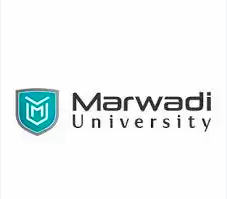INTRODUCTION
Being a good foreign policy and strict stance of our External Affairs Minister, UPI also plays a crucial role in the growth of India. When the whole country went through a recession, India is going to be the rising sun. When UPI was introduced, there was so much backlash faced by the opposition and others. But now, not only in India, but other parts of the world are also using UPI and becoming a part of the digital economy. Let us discuss how UPI has affected India as well as other countries.
HISTORY OF UPI
Generally, when a new technology is introduced, two names that come to mind are the USA and China. When everyone was talking about block chain and Web 3, India implemented UPI. When the UPI system emerged, it became a topic of discussion from Silicon Valley to Australia, and all over the world. Let’s go back slightly to the early 20s when UPI was not there, but people still had to transfer money from one bank to another. In the early 20s, RBI developed the RTGS payment system from IDBRBT. However, in this system, only payments above 2 lakh were possible. It may be recalled that the Reserve Bank of India’s Real-Time Gross Settlement system (RTGS) went live on March 26, 2004, and was open to the settlement of internal bank transactions. From April 29, 2004, the RTGS system was also opened for the settlement of customer transactions. However, it was chargeable, with Rs. 30 for transactions between 2 lakh and 5 lakh, and Rs. 55 for transactions above 5 lakh.
In 2005, RBI introduced NEFT (National Electronic Fund Transfer). To initiate a NEFT transfer, the bank’s IFSC code is a must, along with other details such as the bank account number, bank name, and account holder name. The NEFT system is available round the clock throughout the year, on all days, operating on a 24x7x365 basis. NEFT presently operates in half-hourly intervals throughout the day, for transactions below 20 lakh, but the waiting time is 30 minutes. But still, this payment system was not that handy for the people. The government was aware that if they wanted to connect people more with the digital payment system, it should be easier to use. Then, IMPS (Immediate Payment System) was introduced. With IMPS, you can transfer money by pressing a button on your mobile phone. It has the option for transfers of less than 2 lakh and provides immediate transfers. To use IMPS, your mobile phone and MMID (Mobile Money Identifier) were required for verification, which is linked to your SIM card.
Initially, the fund transfer limit for IMPS was 2 lakhs, but it was later raised to 5 lakhs. While NEFT and RTGS are run by RBI, IMPS is run by NPCI. In 2008, RBI established a non-profit company named NPCI, which introduced IMPS and later UPI. NPCI is an association of banks, initially consisting of 10 banks, but by 2016, it included 13 private sector banks, 15 public banks, 1 foreign bank, 10 central banks, and 7 regional rural banks. However, even with IMPS, it was not easy to directly transfer funds to merchants and required multiple steps. Finally, in 2016, NPCI introduced UPI, simplifying the process.
Introduction of UPI
UPI was originally brought by Raghuram Rajan and Dilip Asbe. UPI is considered to be the brainchild of these two individuals. UPI is an advanced version of IMPS and works on the same architecture and technology as IMPS. UPI introduced VPA (Virtual Payment Address), also known as UPI ID. Instead of sharing IFSC and other details, the VPA acts as your financial address. There is no need to remember the beneficiary’s account number. Basically, UPI is a QR-based system that enables fund transfers, as well as serves as a merchant payment system. With UPI, you can easily purchase goods and make payments.
Effects of UPI
Due to UPI, the market share of big companies like Visa and MasterCard is decreasing rapidly. When ATMs were introduced, you could only withdraw money from the ATM of the bank whose card you had, such as ICICI Bank’s debit card allowing withdrawals only from ICICI Bank’s ATM. Banks didn’t allow cross-bank transactions due to data sharing concerns. Then, network companies like Visa and MasterCard emerged, allowing money withdrawals from any ATM without sharing data with other banks, but they charged a fee. On the other hand, UPI does not charge any fees, resulting in a decrease in the share value of MasterCard and Visa. UPI is growing rapidly at a global level as well.
When you need to make transactions outside the country, you typically use SWIFT (Society for Worldwide Interbank Financial Telecommunication). SWIFT connects all the banks worldwide, enabling people to make payments internationally. Similar to how we use IFSC codes in India, we use SWIFT codes for payments outside India. In the recent Ukraine-Russia war, the US banned Russia from using SWIFT, which meant that Russian banks were cut off from the SWIFT payment system. This caused significant difficulties for people and businesses in Russia, as they were completely isolated from the international market. However, if UPI were implemented worldwide, India would be safeguarded from such situations.
In the current perspective, UPI has gained international recognition. Various countries such as Bhutan, Nepal, Oman, United Arab Emirates, France, Malaysia, Singapore, United Kingdom, Qatar, Saudi Arabia, Thailand, Vietnam, Cambodia, Indonesia, Sri Lanka, Mauritius, Bahrain, Maldives, Hong Kong, Taiwan, South Korea, Australia, Japan, Switzerland, the Netherlands, Canada, the European Union, and Russia are using UPI. The vision of India is to operate UPI globally, as UPI is also linked to credit cards. Recognizing the success of UPI, Google suggested to the US government that they should have a system similar to UPI in the US. In response, the Federal Reserve introduced FedNow, a real-time payment system inspired by UPI. However, the US was not entirely happy with the growth of UPI, as companies like Visa, MasterCard, and SWIFT are US-based.
Recently, India and the UAE officially signed a rupee-dirham trade agreement, which proved to be highly beneficial since the UAE is one of India’s top trading partners. Additionally, France has also started accepting UPI, contributing to India’s growth and bolstering its position as a powerful country.
CONCLUSION
In conclusion, UPI has played a significant role in the growth of India and has gained international recognition. Its introduction has revolutionized the digital payment landscape and simplified fund transfers for individuals and merchants. With its advanced features and QR-based system, UPI has posed a challenge to traditional players like Visa, MasterCard, and SWIFT. As more countries adopt UPI, its global reach continues to expand, enabling seamless transactions and fostering economic integration. India’s vision of operating UPI worldwide reflects its ambition to be at the forefront of digital innovation. The success of UPI has inspired other nations, such as the US, to explore similar payment systems. Overall, UPI has propelled India’s growth and positioned it as a powerful player in the digital economy.
BY: UTKARSH PANDEY
2nd YEAR LAW STUDENT
GALGOTIAS UNIVERSITY
REFERENCE
1. Reserve Bank of India. (2021). Real Time Gross Settlement (RTGS). Retrieved from https://www.rbi.org.in/Scripts/FAQView.aspx?Id=60
2. Reserve Bank of India. (2021). National Electronic Funds Transfer (NEFT). Retrieved from https://www.rbi.org.in/Scripts/FAQView.aspx?Id=80
3. National Payments Corporation of India. (2021). Immediate Payment Service (IMPS). Retrieved from https://www.npci.org.in/product-overview/immediate-payment-service-imps
4. National Payments Corporation of India. (2021). Unified Payments Interface (UPI). Retrieved from https://www.npci.org.in/product-overview/upi-product-overview
5. Ray, S. (2021). UPI: A game-changer for India’s digital payment landscape. Business Today. Retrieved from https://www.businesstoday.in/current/economy-politics/upi-a-game-changer-for-indias-digital-payment-landscape/story/446787.html
6. Economic Times. (2023). India and UAE officially sign rupee-dirham trade agreement. Retrieved from https://economictimes.indiatimes.com/news/economy/foreign-trade/india-and-uae-officially-sign-rupee-dirham-trade-agreement/articleshow/85719808.cms
7. Mint. (2023). France starts accepting UPI, bolstering India’s growing power. Retrieved from https://www.livemint.com/news/india/france-starts-accepting-upi-bolstering-india-s-growing-power-11657216768380.html
8. Economic Times. (2023). UPI gaining international recognition, countries including UAE, France, and Japan using it. Retrieved from https://economictimes.indiatimes.com/tech/technology/upi-gaining-international-recognition-countries-including-uae-france-and-japan-using-it/articleshow/85393541.cms








